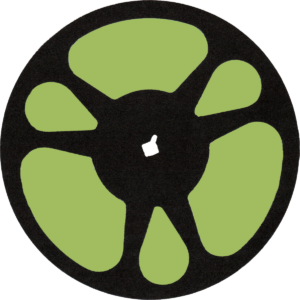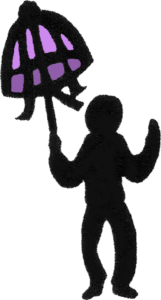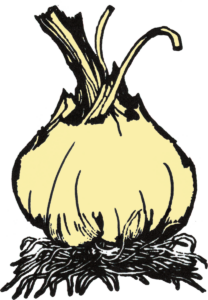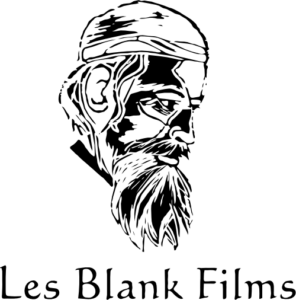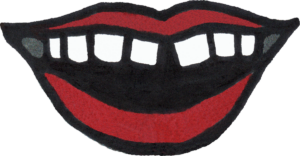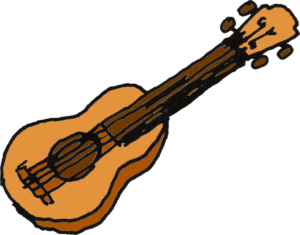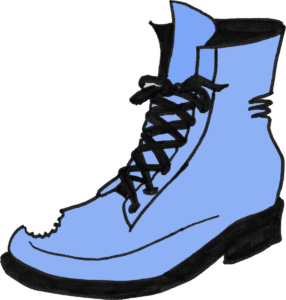A Review of Dancing Outlaw
In the dark recesses of the hills of Boone County, West Virginia lives a man named Jesse (Jessco) White. Around 1990, the eccentric “genius” of this Appalachian everyman became the subject of an irreverent documentary titled DANCING OUTLAW, and whether viewed as a comedy or a study in psychosis, the video has managed to catch the attention of quite a few people. In a mere thirty minutes, this sociological milestone takes the viewer on an enlightening trip into the lives of people in a part of America that is shrouded in mystery, folklore and (not always unjustified) stereotypes.
From his youthful days as a gasoline and glue-huffing juvenile delinquent to his current life as an aspiring entertainer with multiple personalities, Jesse tells all. We hear of his times in jail, his near-death experiences while huffing, the tragic death of his father and mentor, his philosophies about life and love, his “costly shades,” and the way NOT to cook his eggs. You even get a sample of his skill in “mountain dancing”– a form of tap dancing accompanied by bluegrass guitar. Depending on whether he is Jesse (his loving, caring personality), Jessco (the unpredictable and flat-out dangerous personality) or Elvis (whom he impersonates and maintains a religious-like devotion to), his demeanor and stories change to suit. Adding to the fun, Jesse’s tales are supplemented by extensive interviews with his much older wife, Norma, and a slew of blood relatives who aren’t exactly balanced themselves.
Originally made as a documentary for West Virginia Public Television Station WPNB, Dancing Outlaw has managed to find its way into the underground world of tape traders and the shelves of video stores specializing in obscure films. Through a network of hardcore fans (including Rosanne Barr) and some minor exposure in coffee-house screenings and “Film Threat” magazine, the video has become something of an enigma in the all-too-frequently dry world of documentary films.
The first question frequently asked by Dancing Outlaw virgins is, “Is this for real?” The answer is yes. There are no actors, no script, and nobody got paid to act like an insane hillbilly. According to Julian Nitzberg, the film’s associate Producer, the story behind the discovery of Jessie White is just as interesting and freaked-out as the film itself.
As a recent graduate from film school in New York in 1989, Nitzberg began an internship with Appalshop, a film studio in Kentucky fiercely dedicated to documenting the culture of Appalachia in a positive light. Nitzberg describes the studio heads as “Hillbilly Black Panthers who consider ‘Hee-Haw’ offensive in the same way that Blacks find ‘Amos and Andy’ offensive.” With this in mind, Nitzberg decided to document the career of rockabilly legend and Appalachia resident Hasil Adkins. While filming one of Adkins’ live performances at an out-of-the-way bar, Nitzberg overheard a group of women standing in the back yelling profane nonsense. One woman, later introduced as “Flaming Mamie,” approached Nitzberg and informed him that she and her friends were on acid. The following weekend, attempting to locate a missing-in-action Adkins at another club, Nitzberg again ran into Flaming Mamie. After informing him that she and her friends were on acid again, Mamie invited Nitzberg back to her house to attend a birthday party for her husband, promising the filmmaker “a cake with tits and a pussy on it.” Nitzberg was unable to find Mamie’s house that night (“You had to drive through a creek to get to it,” he explains), but the following day he and his crew managed to find her once again. Finally down from the acid, Mamie explained that she wanted Nitzberg to meet her brother, Jessie.
Being a dedicated documentarian, Nitzberg seized the opportunity to meet a possible new subject. After watching some taped footage of Jesse’s father, D. Ray White (a mountain dancer of considerable local fame), Nitzberg developed a rapport with Jesse and learned of his aspirations to follow in his father’s tap steps.With Jessie in the back of his mind, Nitzberg continued his work with Hasil Adkins for another week, until the singer threatened to kill him in a fit of insanity due to voluntary sleep deprivation. Nearly broke and realizing that he could no longer take the stress of dealing with the deranged Adkins, Nitzberg decided to put the project on hold.
In an effort to take his mind off of the Adkins disaster, the filmmaker contacted Jesse and shot some footage of him dancing around his trailer home for a weekend. Realizing he had stumbled on to something great, Nitzberg returned to Appalshop to show what he had found. But because Jessco White so blatantly represented the negative stereotype of the Appalachian hillbilly, the Jessco documentary was flatly refused further backing by the shocked studio.
Unable to fund the project on his own, Nitzberg sent what little footage he had to his friend and former co-worker, Jacob Young. Young instantly loved it, and despite some initial resistence managed to convince his television station to fund the project. With Young as director and Nitzberg as associate producer, the final product, Dancing Outlaw, was filmed for Young’s eclectic public television series, “Different Drummer”. So, there’s the whole story.
Go tell your friends… This is required viewing, especially after a few bottles of cough syrup.
— Jake Harvey,
FilmZone, created by THE BIG GUN PROJECT.
All original material copyright 1996.
